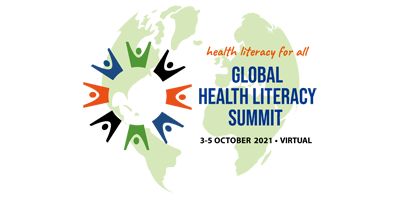Abstract Preview
Abstract
|
Title Effects of Zentangle Art Workplace Health Promotion Activities on Rural Healthcare Workers |
|
Type Poster Presentation Only |
|
Theme Global Health Literacy Summit 2021 |
|
Topic Mental health literacy |
Authors
|
Main Author Min-fen Hsu1 7 |
|
Presenting Author Min-fen Hsu1 7 |
|
Co-Author Chi Wang2 3 Pei-Ling Tang4 5 6 |
Authors' Institution
|
Department / Institution / Country Department of Nursing / Kaohsiung Veterans Gegeral Hospital, Pingtung Branch / Taiwan (台灣)1 Department of Nursing / Meiho University / Taiwan (台灣)2 Department of Nursing / Kaohsiung Veterans General Hospital / Taiwan (台灣)3 Department of Nursing / Shu-Zen Junior College of Medicine and Management / Taiwan (台灣)4 Center of Teaching and Researching / Kaohsiung Armed Forces General Hospital / Taiwan (台灣)5 Institute of Medical Science and Technology / National Sun Yat-sen University / Taiwan (台灣)6 College of Nursing / Kaohsiung Medical University / Taiwan (台灣)7 |
|
Abstract Content (abstracts should be written in Size 11 font, Arial font style) Background: Workplace health promotion activities have a positive effect on emotions, and artistic creation can improve physical and emotional well-being, reduce stress, and increase social interaction. Zentangle Art relaxes the body and mind through the process of concentrating while painting, achieving a healing effect. This study aimed to promote the physical and mental health of rural healthcare workers through Zentangle Art-based intervention. Methods: This is quasi-experimental pilot study. A Zentangle Art workshop was held from November 2019 to July 2020 and included orientation, introduction to Zentangle Art, physical activities, practical exercises, and integration. Each session was limited to 20 participants and lasted approximately 4 hours. A total of 40 healthcare workers were recruited. The participants were asked to provide baseline data, and the Brief Symptom Rating Scale (BSRS-5), work stress management effectiveness self-rating scale, General Self-Efficacy Scale (GSES), and Workplace Spirituality Scale (WSS) were administered before and after the workshop. SPSS 22.0 statistical package software was used to conduct the data analysis. Results: The median age (interquartile range [IQR]) was 32.00 years (23.00-41.75 years). The Wilcoxon signed-rank test revealed that the median (IQR) BSRS-5 post-intervention score was 4.0 (1.25-5.0), which was lower than the pre-intervention score 4.0 (2.0-6.0) (p=0.004). The post-intervention score for the work stress management effectiveness self-rating scale was 36.5 (31.0-40.0), which was also lower than the pre-intervention score 38.5 (32.25-45.0) (p=0.009). A higher score for the GSES or WSS indicated improvements in stress management and self-efficacy. The GSES post-intervention score 25.00 (21.0-30.75) was significantly higher than the pre-intervention score 24.0 (20.25-26.0) (p=0.010), and the WSS post-intervention score 104.0 (88.0-111.75) was significantly higher than the pre-intervention score 97.0 (86.0-107.0) (p=0.005). Conclusions: The study provides evidence that painting therapy can effectively relieve stress, reduce workplace stress and frustration, enhance self-efficacy, and increase commitment to work among healthcare workers, thus improving their physical, mental, and spiritual well-being. Zentangle Art provides employees with multiple channels for expressing their emotions and can improve the physical and mental health of healthcare workers in the workplace. It is beneficial and cost-effective and can serve as a benchmark for peer learning. |
Requires Audio or Video system for Presentation?: No
